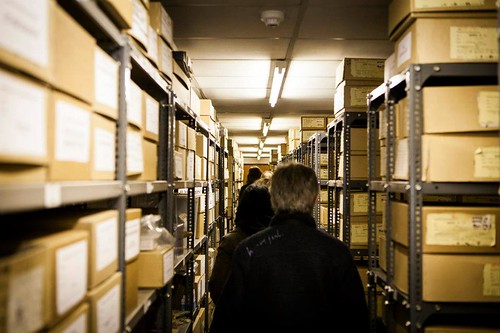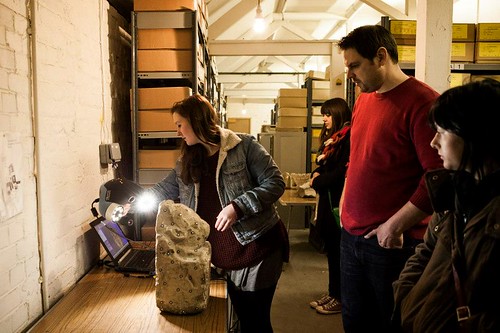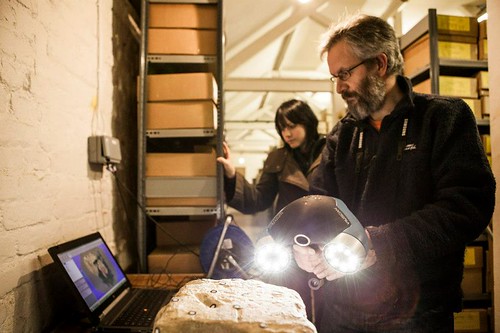Art, Archaeology and New Technologies
This post was originally published at the Basing House: Community, Archaeology and Technology Project blog: http://basinghousecat.wordpress.com/
Photos Acknowledgements: All of the photos in this post were taken by Alick Cotterill, so a big thank-you to him for letting us include them in this post.
Last week I travelled up to the Hampshire County Council Museums Service Headquarters in Winchester to meet with a fab bunch of people. The Winchester School of Art staff and students had come to visit the Basing House archaeology collection, housed partly at the Winchester site and partly at Basing House, in order to learn about some new technologies.
We were planning to try to out pieces of kit for recording the artefacts from Basing House.
The day was a continuation from a project that we have been working on with Winchester School of Art to identify collaborations and opportunities for Archaeology and Art students by working together. We’ve been sharing skills, swapping data, and generally getting to know one another for a few months, and you can see what we’ve been up to over on the Archaeological Computing Research Group blog.
Archaeology PhD students spend the day at the Winchester School of Art print workshop: http://digitalhumanities.soton.ac.uk/blog/1314
Art students spend the day at the Archaeology Department’s Archaeological Computing Laboratory (now the Digital Humanities Distributed Laboratory) finding out about 3D technologies: http://digitalhumanities.soton.ac.uk/blog/
Highlight RTI
The first is a set of equipment that I have been using for a year or so as part of a project to record graveyard and cemetery headstones and church memorials with local history groups. The technology is called Highlight Reflectance Transformation Imaging, or Highlight RTI for short, and is a form of computational photography which allows you to take a series of photographs of an object and then compile them together into an interactive file where the light source can be manipulated in order to get better views of the object you’ve recorded. The project I’ve been working on has a blog here, where you can read all about what RTI is and how it works.
OuRTI project blog: http://ourti.org/
Here is an RTI that we made during the visit. This stone is not from Basing House, but was found at Manor Farm, Chalton and was found ‘under the lawn near the well’. Manor Farm has links back as far as the 13th century, although the provenance of this stone grafitti has not been confirmed.
ZScanner
The other technology is something that I haven’t had a chance to try out yet. Although we have similar equipment in the Archaeology Department, Winchester School of Art have recently procured a ZScanner. This is a fantastic piece of kit is a small handheld laser scanner that allows you to easily record a 3D record of an object in realtime. Here’s a picture of the ZScanner in action:
I haven’t seen the final results of the scans that the teams did on the day, but the real-time data that I saw on the laptop screen while they were trying the scanner out looked awesome. You really can just watch the object appear out of nowhere, with no yukky data processing before you get to see any results. The ZScanner really does promise to make recording objects in 3D a quick and easy task.
Here are some of Alick’s great ‘work in progress’ photos of the ZScanner in action:
Sketching
The students also sketched some objects from the collection, and I am really looking forward to seeing the results from their work. I think that they are going to be on display at the WSA World Book Day event, so if you can go along to that then I highly recommend it.
World Book Day Event
The event is on the 7th March, from 12-4pm, in the Rotunda on the campus of Winchester School of Art, and will include Skill Sharing, Stalls, Installation Events, and Cakes, as well as Multiples, Zines, Prints, Casts and Books on show and/or for exchange or sale.
Next Steps
There is obviously a lot of potential for the use of the above three methods for the recording of objects relating to Basing House, but also I think for the sharing of those objects. I’d like to investigate how the records of these objects can now be shared, so if you’d like to get involved in this, please do get in contact.






